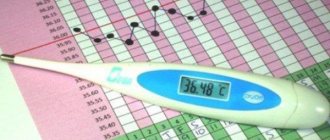With age, the metabolic processes occurring in the female body slow down. The loss of reproductive function affects not only general well-being, but also appearance.
After 50 years, there comes a period of time when you need to be especially careful about your health. Regular medical examinations and preventive examinations will allow you to monitor your condition and detect possible problems in time. Every representative of the fairer sex needs to know about what female diseases occur after 50 years.
Climax
Menopause is perceived as the main gynecological disease in women after 50 years of age. However, this condition cannot be considered pathological. It is a natural process of hormonal origin. During menopause, women experience ailments such as:
- breakthrough uterine bleeding;
- psycho-emotional outbursts;
- feeling of heat;
- increased sweating;
- attacks of suffocation and panic attacks;
- drowsiness and weakness;
- dryness in the intimate area.
If the clinical picture of climacteric syndrome is clear, the patient is prescribed treatment. After 50 years, 2 out of 5 women go to the doctor for this very reason.
Special perestroika menu: eating and not gaining weight
What should the diet be like during menopause, how to compensate for the loss of valuable microelements and not gain extra pounds? Margarita Koroleva, a famous nutritionist, candidate of medical sciences and author of the “Royal Diet” program, recommends paying attention to the following important points.
- Menopause results in a rapid loss of calcium and magnesium. The result is progressive osteoporosis and heart problems. A reliable way to prevent bone loss are foods containing phytoestrogens: cottage cheese, cheese and dark green vegetables rich in calcium, as well as magnesium and zinc. Zinc is a precursor to progesterone (a hormone that controls estrogen levels). Zinc is also useful for strengthening the immune system. There is a lot of it in whole grains, dark lettuce, artichokes, meat, and seafood (including oysters).
- For the prevention of osteoporosis, magnesium is much more important than calcium, although it makes up only a small part of bone tissue. Magnesium promotes the entry of calcium into the body and prevents its excretion. In the absence of the required amount of magnesium, the additional calcium we consume will be deposited not in the bones, but somewhere else - in the walls of the arteries, for example. The source of magnesium can be grains, legumes, meat, as well as food additives that include this element.
- Another problem during menopause is a decrease in the acidity of gastric juice, which can lead to impaired absorption of vitamin B12. But it is he who takes part in the construction of bone tissue and hematopoiesis. Sources of this vitamin include grains, meat products and green leafy greens.
- We must not forget about vitamin D, which provides strength and stability to the skeleton. It is formed in the skin under the influence of sunlight or enters the body as part of the fat of marine fish, as well as with egg yolks, dairy products, cheese and grains.
- Take care to increase the amount of pyridoxine (vitamin B6) and folic acid in your diet, which activate the formation of cysteine, which is necessary to strengthen connective tissue. These microelements are found in bread, grains and legumes, as well as in green leafy salads.
- Sea fish, which contains unsaturated fatty acids of the omega-3 class, should be included in the diet at least twice a week to normalize metabolism and prevent atherosclerosis.
- Drink more water, eliminating sugary carbonated drinks. Even with slight dehydration, the rate of metabolic processes decreases by 30%.
- Be sure to control your weight. If before menopause fat deposits are evenly distributed throughout the body, then during menopause fat settles mainly in the abdominal area, causing the figure to take on the shape of an “apple”. Such a sudden change and a significant increase (10 kg or more) in weight can be a harbinger of the development of cardiovascular diseases. Contact an endocrinologist: it may be worth examining the hormonal status of the thyroid gland. After all, a decrease in its function is a common pathology at an elegant age
- Not many people know that the fatty tissue that women fight so hard to lose is an amazing thing! It contains the aromatase enzyme. With age, this enzyme is activated and adds the hated 4-5 kg. But at the same time, it produces female hormones that continue to protect blood vessels from narrowing, bones from osteoporosis, and the brain from dementia.
- Don't get carried away with short-term diets. They will not solve the problem of excess weight, but they will cause a lot of harm to the body. Only a constant correct diet, eating small portions 5-6 times a day in combination with physical activity will help you lose extra pounds and maintain the result.
- Move more often: the more you move, the more oxygen your body receives. Aerobic exercise, yoga, swimming, walking or cycling are very helpful. A healthy lifestyle and giving up bad habits will help minimize the difficulties of the transition from the reproductive period and maintain vigor and a positive attitude.
Cancer
The tendency to cancer affecting the pelvic organs increases in women after 50 years of age. The pathology is accompanied by the proliferation of atypical cells in the cervix, on the functional mucous and muscular layer of the reproductive organ or gonads. If detected at an early stage, the oncological process can be stopped and its spread can be prevented.
Cervical cancer is mostly caused by the human papillomavirus. Pathology is recognized in the early stages using a Pap test. The study makes it possible to identify atypical cells even before they become malignant.
Uterine cancer is accompanied by the growth of atypical cells in the cavity of the reproductive organ: on the endometrium or in the myometrium. An ultrasound will allow you to suspect an unfavorable condition, and a histological examination performed after curettage will help to confirm it.
Ovarian cancer can occur on one side or affect both glands. In the early stages there are no obvious symptoms, but may be suspected by ultrasound scanning.
Malignant diseases of the pelvic organs are accompanied by unexpected bleeding, menstrual irregularities and deterioration in general health.
Cyst
A benign tumor on the ovary can appear as a result of hormonal changes after 50 years. Functional neoplasms occur without significant symptoms and resolve on their own without negative consequences.
Cysts such as dermoid, endometrioid, mucinous, serous require therapeutic manipulation. Tumors are benign in origin, but under unfavorable conditions they can degenerate into cancer. An ovarian cyst in a woman can be detected during an ultrasound.
Myoma
By the age of 5, 8 out of 10 women are diagnosed with uterine fibroids. If the patient does not know about this disease, this does not guarantee its absence. Often, fibroids are identified during regular medical examination.
The tumor is diagnosed quite well through ultrasound scanning, and if it is large, it can be suspected after manual examination.
Most patients with fibroids do not complain about their health. The disease can develop asymptomatically over a long period of time. Uterine fibroids can be located in the cavity of the reproductive organ, embedded in the muscle wall or growing outward.
The pathology does not pose a serious danger. When small fibroids are detected, doctors take a wait-and-see approach. The absence of symptoms and complaints is the main factor regulating the need for treatment. If fibroids begin to actively grow after 50 years, then a decision is made to remove the uterus.
Life is not over!
Now everyone is talking about hormone replacement therapy, but I have heard that this treatment has many contraindications.
Tatyana Yakovlevna, Saransk
Yes, there are contraindications: varicose veins, tumors, uterine fibroids. If a woman arrives at the onset of menopause with increased body weight, then the possibilities for hormone replacement therapy are limited.
This therapy can be used for up to 5 years, it helps to get rid of the signs of menopausal syndrome. And also - and this is very important - HRT improves bone health. As soon as menstruation stops, the body stops producing the main female sex hormone estrogen, which is involved in strengthening bones. One of the first tests to do during the transition period is a bone density test. It shows whether a woman is prone to osteoporosis. In Europe, osteoporosis is now considered the main problem of old age; for an old person there is nothing worse than a hip fracture and forced long-term lying. But the development of osteoporosis can only be prevented at the age when menstruation stops. After 60 years, osteoporosis is not treated with hormones. After 60, you can only take medications to maintain the bone density that remains at this age.
HRT does not necessarily involve maintaining menstruation. There are different drugs, and we prescribe them, taking into account the woman’s age and various circumstances. If menopause has begun prematurely and it is psychologically important for a woman to have her period, we select medications that give a menstrual-like reaction. If the woman is older, we choose drugs with a microdose of estrogen, which do not give a menstrual-like reaction, but relieve the unpleasant symptoms of menopause. Most often, such treatment is carried out for 6-12 months, then it can be canceled and the patient’s general well-being can be assessed.
Estrogens determine a woman’s appearance, the condition of her skin, bones, her mood, and when their number decreases, discomfort is inevitable. But today we have the opportunity to fix everything.
Menopause changes the condition of the mucous membranes. This leads to difficulties in sexual life. But this problem can also be solved. There are preparations with topical estrogens, they are selected individually. A woman should not think that with the advent of menopause, life ends. It will last for a long time, and there are all the conditions to make it comfortable.
Inflammation
Infectious and inflammatory processes in the pelvic cavity occur in women after 50 years of age. The fetus is influenced by the general condition of the body; they can be frequent or rare.
Hormonal changes and decline in reproductive function seriously undermine women's health. Psycho-emotional instability, stressful conditions, distortion of the ovaries lead to changes in the vaginal microflora. As a result, the growth of opportunistic microorganisms or the colonization of pathogenic microorganisms begins.
Every third woman during menopause (after 50 years) is diagnosed with gynecological diseases such as vaginitis, bacterial vaginosis (gardnerellosis), myometritis, endometritis, oophoritis and adnexitis. Treatment of pathologies is carried out by a gynecologist after identifying the pathogen and identifying its resistance to drugs used in this area.
Age-related physiological metamorphoses in women after 50 years
Having crossed the 50-year mark, women increasingly feel the approaching old age: the condition of the skin, hair, nails worsens, the breasts lose their former elasticity, fat deposits appear in the most inappropriate places, intervertebral discs wear out, causing a decrease in height, insufficient production of vaginal lubrication limits sexual activity. Such changes are typical during menopause and are caused by insufficient production of estrogen by the ovaries. A sharp drop in the level of sex hormones is less painful for women with curvy figures: they are less worried about menopausal syndrome, fat deposits hide the loss of skin elasticity.
Hormonal imbalance provokes not only physiological changes. Insufficient production of sex hormones after fifty years of age also affects the psycho-emotional state of a woman. It seems to her that as her youth fades, she loses her attractiveness and interest in the opposite sex.
In fact, in addition to calendar age, there is also biological age, which combines the metabolic, functional and adaptive characteristics of the female body.
To assess the difference between two values, they resort to analysis of factors such as:
- vital capacity of the lungs;
- memory;
- intellectual abilities;
- visual acuity;
- coordination of movements;
- functioning of all organs and systems of the body;
- social and sexual activity;
- psycho-emotional state.
Mammary gland
Diseases of the mammary glands can also be classified as age-related. Their risk increases after age 45 and peaks at age 50. During this period, all patients are recommended to undergo a simple examination - mammography. The procedure will help identify the presence of atypical cells in the mammary glands at an early stage.
Breast tumors occupy a leading place among cancer diseases in women after 50 years of age. Pathology can be asymptomatic, slowly but surely destroying the body from the inside. Changes occurring in the mammary glands are inextricably linked with the work of the ovaries. Therefore, all patients who have crossed the age of half a century should regularly visit a gynecologist and conduct an independent breast examination every month.
Features of the aging process of the female reproductive system
The content of the article
In the postmenopausal period, a number of atrophic changes occur in a woman’s body associated with the extinction of the hormonal activity of the ovaries. They mainly concern the genitals and mammary glands.
Main signs of aging:
- reduction in the mass of metabolically active tissues;
- structural and functional changes in the remaining tissue.
These processes proceed differently, depending on individual characteristics and various tissue characteristics, which in this regard can be divided into two groups:
- bradytrophic tissues, characterized by a slow aging process;
- tachytrophic tissues with a faster aging process.
The rate of aging also depends on the interaction of neurohormonal factors and environmental conditions.
Woman aging process
The aging process is mainly associated with mesenchymal tissue, which is especially susceptible to loss of water, elasticity, transmineralization and changes in the protein component of fibrous structures - collagen and elastin.
Structural changes occur in the cellular elements of this tissue. Particularly dangerous are the processes occurring in blood vessels and consisting in the accumulation of lipo- and glycoproteins and the accumulation of calcium deposits. As a result of swelling of the vascular endothelium, blood flow and tissue nutrition are disrupted. Degenerative changes occur in the sheath of nerve fibers.
The activity of the endocrine glands, especially the hypothalamus, is directly related to the nervous system. This organ, performing hormonal functions, is one of the centers of the autonomic system that regulates body temperature, libido, appetite and thirst. It is also involved in the regulation of sleep and the formation of emotional states.
Risk factors
Predisposition to various diseases after 50 years of age varies from one pathology to another. Diseases influence each other, suppressing secondary processes or provoking their development. It is impossible to say in advance what awaits this or that woman after 50 years.
Centuries-old medical practice shows that the likelihood of gynecological diseases is higher in patients:
- nulliparous or those who have excluded lactation;
- regularly having abortions;
- leading a promiscuous sex life;
- self-treated (herbs, antibiotics, hormones);
- with a hereditary predisposition;
- having sexually transmitted diseases.
To prevent the development of gynecological pathologies, after 50 years of age, it is necessary to visit a gynecologist at least 2 times a year and perform the prescribed diagnostic procedures.
https://youtu.be/N_iOmCjogXI
Is it necessary to visit a gynecologist in old age?
Studies among postmenopausal women carried out by the Department of Gynecology and Obstetrics-Didactics of the Medical University of Warsaw and other medical institutions in Europe show that:
- All postmenopausal women recognize the importance of preventive examinations, but they go to the gynecologist only on occasion or in the presence of alarming symptoms.
- All women have heard about breast cancer, but 25% of women do not know the rules for conducting breast self-examination, and approximately another half do not perform self-examination.
- The only symptom that always makes women see a gynecologist is bleeding after menopause. The rest do not cause significant concern until they worsen.
- The most hidden symptom is urinary incontinence.
- Women who have been explained the need and effectiveness of hormonal treatment unconditionally agree to undergo HRT.
Based on the data and current knowledge, a more holistic approach to the entire population of postmenopausal women is needed. Relatives should remind older women that they are in a difficult period, so a preventive examination by a gynecologist every six months is a necessity.
ONLINE REGISTRATION at the DIANA clinic
You can sign up by calling the toll-free phone number 8-800-707-15-60 or filling out the contact form. In this case, we will contact you ourselves.
If you find an error, please select a piece of text and press Ctrl+Enter










